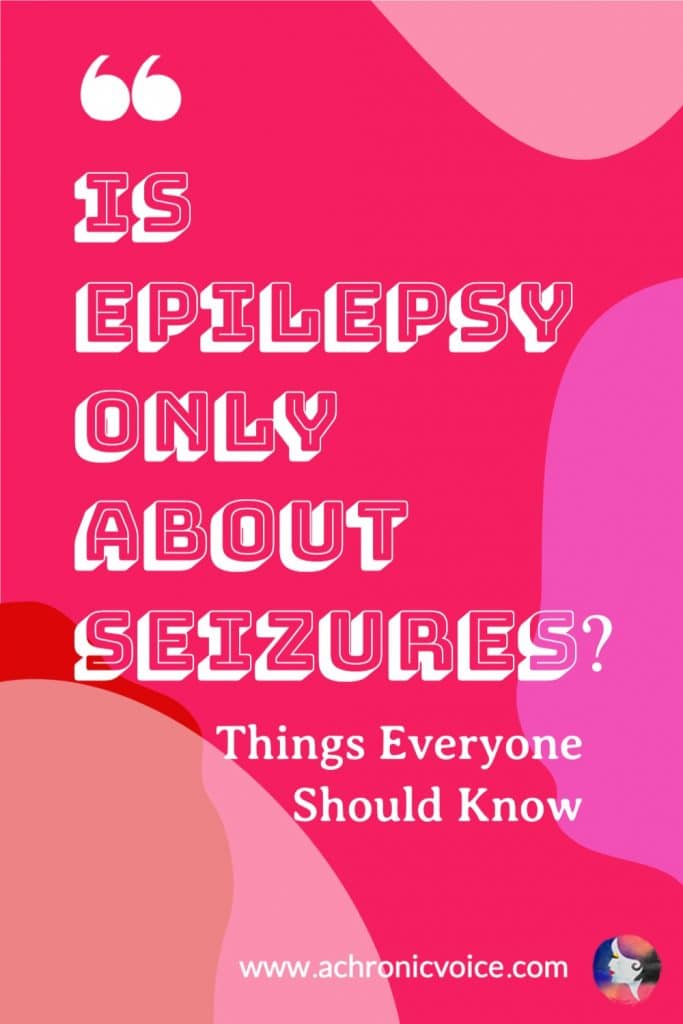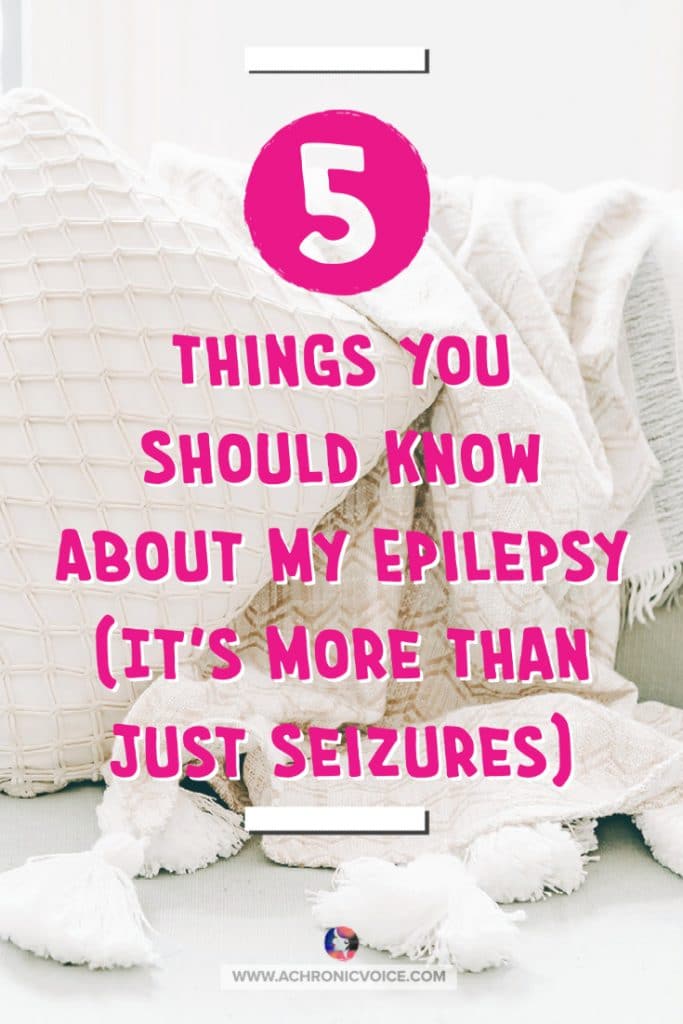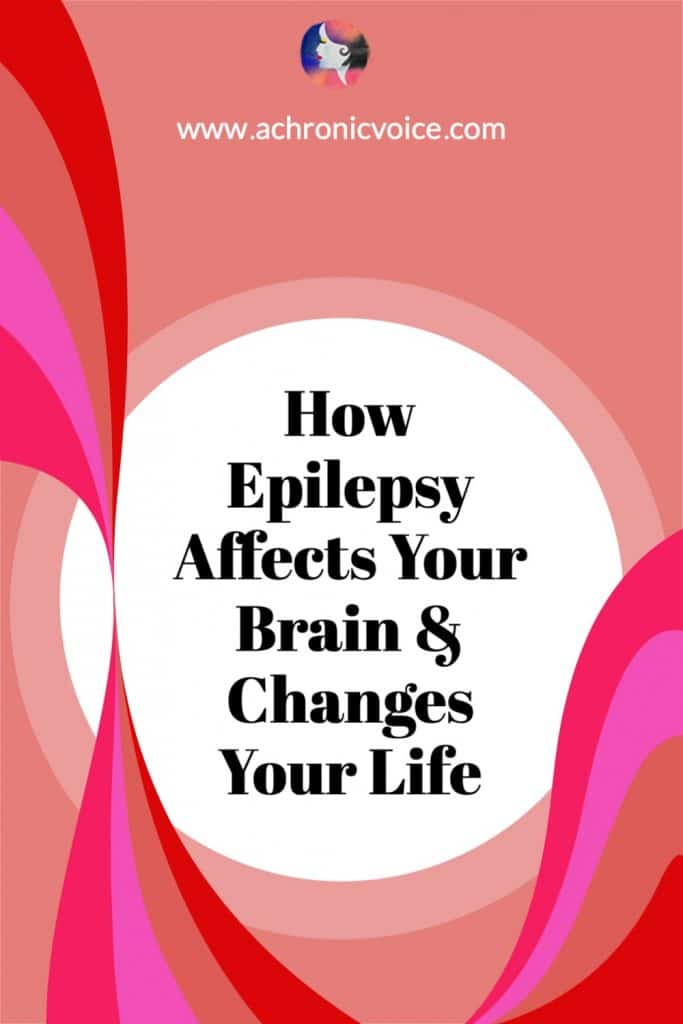Archive for category Epilepsy
[Abstract] Wired for sound: The effect of sound on the epileptic brain
Posted by Kostas Pantremenos in Epilepsy, Music/Music therapy on November 8, 2022
Abstract
Sound waves are all around us resonating at audible and inaudible frequencies. Our ability to hear is crucial in providing information and enabling interaction with our environment. The human brain generates neural oscillations or brainwaves through synchronised electrical impulses. In epilepsy these brainwaves can change and form rhythmic bursts of abnormal activity outwardly appearing as seizures. When two waveforms meet, they can superimpose onto one another forming constructive, destructive or mixed interference. The effects of audible soundwaves on epileptic brainwaves has been largely explored with music. The Mozart Sonata for Two Pianos in D major, K. 448 has been examined in a number of studies where significant clinical and methodological heterogeneity exists. These studies report variable reductions in seizures and interictal epileptiform discharges. Treatment effects of Mozart Piano Sonata in C Major, K.545 and other composer interventions have been examined with some musical exposures, for example Hayden’s Symphony No. 94 appearing pro-epileptic. The underlying anti-epileptic mechanism of Mozart music is currently unknown, but interesting research is moving away from dopamine reward system theories to computational analysis of specific auditory parameters. In the last decade several studies have examined inaudible low intensity focused ultrasound as a neuro-modulatory intervention in focal epilepsy. Whilst acute and chronic epilepsy rodent model studies have consistently demonstrated an anti-epileptic treatment effect this is yet to be reported within large scale human trials. Inaudible infrasound is of concern since at present there are no reported studies on the effects of exposure to infrasound on epilepsy. Understanding the impact of infrasound on epilepsy is critical in an era where sustainable energies are likely to increase exposure.
Similar articles
- Mozart K.448 and epileptiform discharges: effect of ratio of lower to higher harmonics.Lin LC, Lee WT, Wu HC, Tsai CL, Wei RC, Jong YJ, Yang RC.Epilepsy Res. 2010 May;89(2-3):238-45. doi: 10.1016/j.eplepsyres.2010.01.007. Epub 2010 Feb 2.PMID: 20129759
- Abstracts of Presentations at the Association of Clinical Scientists 143rd Meeting Louisville, KY May 11-14,2022.[No authors listed]Ann Clin Lab Sci. 2022 May;52(3):511-525.PMID: 35777803
- Study of the Mozart effect in children with epileptic electroencephalograms.Grylls E, Kinsky M, Baggott A, Wabnitz C, McLellan A.Seizure. 2018 Jul;59:77-81. doi: 10.1016/j.seizure.2018.05.006. Epub 2018 May 9.PMID: 29763803
- [Epilepsy, Mozart and his sonata K.448: is the «Mozart effect» therapeutic?].Hernando-Requejo V.Rev Neurol. 2018 May 1;66(9):308-314.PMID: 29696618 Review. Spanish.
- Music in epilepsy: Predicting the effects of the unpredictable.Rafiee M, Istasy M, Valiante TA.Epilepsy Behav. 2021 Sep;122:108164. doi: 10.1016/j.yebeh.2021.108164. Epub 2021 Jul 10.PMID: 34256336 Review.
[Abstract] Experiences investigation for COVID‐19 vaccination in patients with epilepsy
Posted by Kostas Pantremenos in COVID-19, Epilepsy on November 2, 2022
Abstract
Objective
This study aimed to investigate the safety of COVID-19 vaccination in patients with epilepsy (PWE) and their willingness to undergo vaccination.
Methods
This was a survey study. A questionnaire was completed by patients of the outpatient clinic and hospital ward at The Third Xiangya Hospital in 2021. The survey included general, epilepsy-specific, and COVID-specific questions.
Results
In total, 120 valid questionnaires were returned. Eighty-nine of 120 patients (74.2%) were not vaccinated, and 31 (25.8%) received the COVID-19 vaccine. Of the 31 vaccinated PWE, one (3.2%) had worsening of seizures and four (12.9%) had adverse reactions that were characteristic of the COVID-19 vaccine. The other 26 patients (83.9%) reported no adverse reactions, Moreover, there was no significant difference between the 18 PWE with well-controlled seizureand the 13 PWE with poorly-controlled seizure. Of the 89 unvaccinated PWE, 69.7% (62/89) were willing to receive the COVID-19 vaccine, 28.1% (25/89) were unsure, and 2.2% (2/89) declined to be vaccinated.
Significance
Among PWE, few adverse reactions occurred following the COVID-19 vaccination. Most PWE were willing to receive the COVID-19 vaccine. COVID-19 vaccination is safe for PWE.
[Abstract] Safety and Adverse Events Following COVID-19 Vaccination among People with Epilepsy: A Cross-Sectional Study
Posted by Kostas Pantremenos in COVID-19, Epilepsy on October 13, 2022
Abstract
Objective
Epilepsy is an under-discussed non-communicable disease costing massive burden globally. It is known that there is increased prevalence of morbidity and mortality following COVID-19 infection among people with epilepsy (PWE). However, there is limited information about the adverse events following COVID-19 immunisation among PWE. Hence, this study aimed to assess the safety and adverse events following immunisation (AEFI) of COVID-19 vaccinations among PWE who follow up in our centre, with a focus on neurologic AEFI.
Methods
This cross-sectional study recruited 120 adult PWE who are under the follow-up of the Neurology Clinic, Universiti Kebangsaan Malaysia Medical Centre (UKMMC). Consent-taking was conducted via synchronous or asynchronous approaches, followed by a phone call interview session. The interview collected socio-demographic information, epilepsy-related variables, and vaccination-related variables. Univariate analysis and multiple logistic regression analysis were done to confirm factors associated with the AEFI of COVID-19 vaccinations.
Results
Among all types of COVID-19 vaccines, most of the PWE received the Cominarty® COVID-19 vaccination (52.5%). Overall, local AEFI was the quickest to develop, with an average onset of within a day. PWE with normal body mass index (BMI) have a higher risk of developing both local and systemic AEFI compared to those underweight and obese PWE. (OR: 15.09, 95% CI 1.70-134.28, p=0.02).
Significance
COVID-19 vaccine is safe for PWE. AEFI among PWE are similar to the general population following COVID-19 vaccination. Therefore, clinicians should encourage their PWE patients to take COVID-19 vaccine.
[VIDEO] How to Use Vision, Hearing, Taste & More To Recognize Epilepsy
Posted by Kostas Pantremenos in Educational, Epilepsy, Video on October 13, 2022
Derek Chong, MD – Directory of the Epilepsy Program at Lenox Hill Hospital, takes us through some of the warning signs and indicators that each of our five senses can offer for identifying Epilepsy, a condition that manifests in different ways from person to person.
[BLOG POST] How does sleep impact epilepsy?
Posted by Kostas Pantremenos in Epilepsy on October 6, 2022
Epilepsy and Sleep
How does sleep impact epilepsy?
Andrew Bagshaw is a Professor of Imaging Neuroscience at the University of Birmingham and has been a member of Epilepsy Research UK’s Scientific Advisory Committee for the past five years. In this blog, Andrew discusses the many ways in which sleep is important and its relevance for epilepsy.
Sleep is important. We might not know exactly what it is for, or how it works, but all of us know that we need it. Have a night without sleep, or a night where you keep waking up, and the next day will be difficult. You’ll be struggling to stay awake, probably feeling low in mood and irritable, finding it difficult to think clearly, and may find yourself snacking continuously. This is because sleep is needed to help your brain and body function properly. There probably isn’t a single process in the brain or body that gets better with bad sleep.
Sleep is also intimately entwined with epilepsy. Some people only have seizures when they are sleeping, while for many a poor night’s sleep can increase the risk of a seizure the next day. This was noted around two and a half thousand years ago by Hippocrates, often called the father of modern medicine. Not only was he among the first to recognise that epilepsy and seizures come from the brain, but he suggested that people with epilepsy should ‘spend the day awake and the night asleep. If this habit be disturbed, it is not so good … worse of all when he sleeps neither night nor day’.
Unfortunately, many studies have demonstrated that adults and children with epilepsy generally have poorer sleep than people without epilepsy. Recently, we combined the results of studies that examined sleep in around 900 children with epilepsy and 1500 children without epilepsy. Children with epilepsy had shorter durations of sleep and worse sleep quality than their peers without epilepsy, as well as being more likely to suffer from sleep difficulties like night waking and sleep walking.
How can we understand more about the relationship between epilepsy and sleep? First, we need to consider what aspect of sleep we want to consider. Sleep is not a single thing, it is a complex behaviour with many facets that takes up around a third of our lives as adults, and more as children. Saying that epilepsy and sleep are linked isn’t very helpful, it’s like saying that epilepsy is linked with being awake. What aspect of being awake is important – how much exercise someone does, what they eat, the stresses they face, their mood? All these factors would need to be considered, and it’s the same with sleep. We can look at the amount of sleep a person gets, their sleep quality in terms of whether they find it difficult to get to sleep or wake up in the night, or the daytime consequences of poor sleep described above. Equally important might be the changes to brain activity that come about during sleep, or how sleep habits relate to waking brain function. At the minute, we really don’t know enough about sleep to be able to predict which aspects are the most important.
Over the past few years, we’ve used a range of approaches to understand how sleep affects the brain, and how sleep and epilepsy are linked. We’ve had people with and without epilepsy sleeping inside the MRI scanner, with electrodes on their scalp (this isn’t for everyone, but it’s not as bad as it sounds!). We’ve looked at differences in brain structure and function between short and long sleepers, and between early and late sleepers. We’ve used watches similar to fitness trackers to give us an idea of people’s sleep over a couple of weeks following their normal schedule. We’ve also looked at how the relationship between sleep and epilepsy is impacted by traits of autism and ADHD (which tend to be higher in people with epilepsy, and are themselves associated with sleep disruptions). All these approaches are needed because sleep is complex and multi-faceted. Slowly, they’re enabling a clearer picture of how sleep affects the brain, and what that means for people with epilepsy.
[WEB] Detecting seizures set to be easier than before
Posted by Kostas Pantremenos in Epilepsy on October 4, 2022
By PuneMirror Bureau

The development has the potential to do away with the current practice of manual evaluation of Electroencephalogram (EEG)
IISc finding has potential to do away with tedious manual evaluations
#BENGALURU Researchers at the Indian Institute of Science (IISc) have joined hands with AIIMS Rishikesh to create an algorithm that can help decipher brain scans and identify the occurrence and type of epilepsy. The development has the potential to do away with the current practice of manual evaluation of Electroencephalogram (EEG) which can be often tedious and sometimes lead to errors. Epilepsy is a neurological condition where the brain emits sudden bursts of electrical signals in a short amount of time, resulting in seizures, fits and sometimes even death. Based on the point of origin of the brain’s erratic signals, epilepsy is classified as either focal or generalised epilepsy.
Focal epilepsy occurs when the erratic signals are confined to a specific region in the brain. If the signals are at random locations, then it is termed as generalised epilepsy, an IISc statement said. “The research aims to differentiate EEG of normal subjects from epileptic EEGs. Additionally, the developed algorithm attempts to identify the types of seizures. Our work is to help the neurologists make an efficient and quick automated screening and diagnosis,” says Hardik J. Pandya, Assistant Professor at the Department of Electronic Systems Engineering (DESE) and the corresponding author of the study published in Biomedical Signal Processing and Control. During the course of their study, the team noted a novel algorithm that can sift through EEG data and identify signatures of epilepsy from the electrical signal patterns.
After initial training, the algorithm was able to detect whether a human subject could have epilepsy or not — based on these patterns in their respective analyses — with a high degree of accuracy, the researchers say. To develop and train the algorithm, the researchers first examined EEG data from 88 human subjects acquired at AIIMS Rishikesh. Each subject underwent a 45-minute EEG test, divided into two parts: an initial 10-minute test when the subject was awake, which included photic stimulation and hyperventilation, followed by a 35-minute sleep period when the subject was asked to sleep. Next, the team analysed this data and classified different wave patterns into sharp signals, spikes and slow waves.
IANS
[WEB] Seizures: Types, Causes, Treatment
Posted by Kostas Pantremenos in Epilepsy on September 11, 2022
- A seizure occurs when there is abnormal electrical activity in the brain.
- There are different types of seizures depending on where and how much brain activity is affected.
- If someone is seizing make sure to roll them on their side and record how long the episode lasts.
Seizures occur when the normal electrical activity in your brain is disrupted. This can lead to symptoms like unconsciousness, uncontrollable shaking, or lip-smacking.
Your symptoms largely depend on what area of the brain is affected. For example, if the part of your brain responsible for movement is affected, then your muscles might tense up.
About one in ten people will experience at least one seizure in their lifetime, and the seizure will usually last anywhere from 30 seconds to two minutes.
However, not all seizures are the same. Different types of seizures can affect one or all areas of the brain for varying durations, which causes different symptoms.
Below are six different types of seizures, explained and a guide on what to do when someone is having a seizure.
1. Focal seizure
A focal seizure is when only one part of the brain is affected, says Holly Skinner, DO, a neurologist specializing in epileptology and sleep medicine at AdventHealth.
There are two subtypes of focal seizures, which identify whether, or not, the person loses consciousness:
- Focal impaired awareness seizures: When you lose consciousness or awareness of your surroundings.
- Focal aware seizures: You are alert and able to remember what happened during the seizure, though your emotions and senses may be impaired.
2. Febrile seizure
A fever can trigger febrile seizures in children aged 3 months to 6 years. This type of generalized seizure occurs in about 2% to 5% of children before age 5.
Medical term: A generalized seizure is when all areas of the brain are affected by abnormal electrical activity.
Symptoms include uncontrollable shaking of both arms and legs, stiff limbs, eye-rolling, and loss of consciousness, which usually occur for less than 15 minutes.
Children with prolonged seizures lasting more than 30 minutes have a 30% to 40% risk of developing epilepsy. Moreover, long-lasting seizures, aka status epilepticus, increases the risk of having repeat seizures.
3. Tonic and atonic seizure
Tonic and atonic seizures are types of generalized seizures that affect the muscles, but in different ways.
- Tonic seizures occur when a limb or the entire body stiffens in an instant.
- Atonic seizures mean that a specific region or the entire body experiences a sudden loss of muscle tone and goes limp, says Sarita Maturu, DO, a neurologist at The Ohio State University Wexner Medical Center.
Note: Seizures, in general, may be triggered by high fever, flashing lights, head trauma, or stroke.
During either a tonic or atonic seizure, individuals may lose awareness or consciousness where they can collapse and potentially hurt themselves. They usually last for about 15 to 20 seconds or less.
4. Clonic seizure
Clonic seizures last for a few seconds to a minute and are characterized by repeated and rhythmic jerking of the neck, face, limbs, or the entire body.
The jerking can happen on just one or both sides of the body depending on how much of the brain is affected. If the entire brain is affected, it’s likely that the person may lose consciousness or have an impaired awareness when the seizure occurs.
This type of generalized seizure is more common in babies, but it can affect all age groups.
5. Tonic-clonic seizure (Grand mal)
Tonic-clonic seizures are the new term for what used to be called grand mal seizures.
The new name is more indicative of what they entail: Tonic-clonic seizures include the symptoms of both tonic and clonic seizures:
- First, the muscles stiffen and there is an abrupt change in awareness or loss of consciousness, similar to a tonic seizure.
- Then the limbs jerk rapidly and rhythmically just like during a clonic seizure.
“Some causes of generalized tonic-clonic seizures are due to genetics or from strokes, head injuries, tumors, brain infections, and other inflammatory conditions,” says Skinner. “Generalized tonic-clonic seizures typically are rare and can occur at any age, but peak in early childhood or adolescence.”
Note: A generalized tonic-clonic seizure is the most common type experienced by patients with epilepsy.
6. Absence seizure (Petit mal)
Absence seizures, previously known as petit mal seizures, are brief periods of loss of awareness that usually last for about five to ten seconds.
It is caused by brief abnormal electrical activity that begins in both sides of the brain where electrical signals repeat themselves over and over, leading to symptoms such as staring into space with a blank look, fluttering eyelids or eyes turning upwards, or lip-smacking.
Absence seizures are common among children ages 4 to 14, and about 70% of children who experience them will outgrow it by age 18. The other 30% may require seizure medication long-term to manage their symptoms.
What to do when someone is having a seizure
It’s important to know what to do when you witness someone having a seizure. Here are a few tips to help them:
| DOs: | DON’Ts: |
| Do cushion their head with something soft, like a pillow or folded jacket. | Don’t try to restrain them or stop their movements. |
| Do roll them onto one side to help them breathe. | Don’t leave them before medical personnel arrive. |
| Do protect them by clearing the area of hard or sharp objects that may harm them. | Don’t put anything in their mouth because it can choke or injure them. |
| Do loosen anything around their neck that may make it hard to breathe. | Don’t try to give them mouth-to-mouth resuscitation. |
| Do observe their symptoms and time the seizure so you can provide them with details. | Don’t offer them any food or drink until they are completely alert. |
Experts say it’s a common misconception that you have to prevent the person having a seizure from swallowing their tongue.
“Putting something in someone’s mouth while they are having a seizure can actually lead to choking, and putting your own fingers in someone’s mouth could lead to severe injury of your own hand. You cannot swallow your tongue,” says Maturu.
Note: Any seizure lasting more than five minutes requires immediate medical attention as it may lead to permanent brain damage or death.
Insider’s takeaway
Seizures are caused by a sudden electrical disturbance in the brain, which can be triggered by various factors such as high fever, brain tumor, or head trauma. Different types of seizures vary in their clinical manifestations.
If you see a person having a seizure, don’t try to stop their movements or put anything in their mouth.
“It’s important to remember that seizures are treatable. If someone is having seizures despite taking seizure medication, you should call their doctor immediately and they should be seen at a dedicated epilepsy center,” says Skinner.
Freelance Reporter, Insider Reviews
Carla is a Filipino freelance health & culture journalist with bylines in Insider, Architectural Digest, Elemental, Observer, and Mental Floss. Outside of writing, she works for local theatre productions as a stage manager and assistant sound operator. Learn more about how our team of experts tests and reviews products at Insider here.
[WEB] 5 Things You Should Know About My Epilepsy (It’s More Than Just Seizures)
Posted by Kostas Pantremenos in Epilepsy on September 10, 2022

by Sheryl Chan
*Note from A Chronic Voice: Tiffany Kairos is an active advocate in the chronic illness and epilepsy community online, and such a lovely lady, too! She’s constantly supporting and giving shoutouts to other chronic illness advocates whenever and wherever she can. I live with epilepsy myself, albeit to a lesser degree than Tiffany does. My form of epilepsy is the typical grand mal seizures that you see on TV, and for a period of time they were happening dangerously in my sleep. Let’s read Tiffany’s experiences with epilepsy, and learn more from her in this post!
By and large, when I tell someone that I live with epilepsy they’re taken aback, astonished that I appear fine and relatively healthy. They also have an expression of perplexion, because they don’t know what epilepsy is.
There are over 40 types of epilepsy, many of which do not always involve dropping and convulsing. (Also known as a grand mal, or generalised tonic-clonic seizure.) My condition, epilepsy, is a neurological disorder, which means that it impacts more than just my brain.
Here’s what you should know about living with epilepsy, which I share about in this article through my own experiences.
1. Epilepsy Is More Than Just Seizures
Symptoms that commonly occur alongside epilepsy include:
- Depression and Anxiety
- Fear
- Stress
Taking care of our physical health is half the battle when living with epilepsy. It’s an emotional and social battle, too. When the doctor first dropped the bombshell that I had epilepsy, I felt every emotion in the book so deeply, yet numb at the same time.
I wrestled with depression for over a year. Research estimates that 30 to 35 percent of people with epilepsy experience depression. Living in constant fear of when the next seizure would strike, and stressed about what my future might look like.
And strike they did. Unexpectedly, continuously and variously.
- So This is What a Seizure Feels Like
- Clinical Depression: Diagnosed 10 Years Late
- Sometimes, Physical Pain Isn’t the Worst Part About Chronic Illness
Pin to Your Chronic Illness Awareness Boards:


2. The Importance of Having a Support System in Place
A rock solid support system is essential for tackling any difficulties along the way. The empowerment of having family and friends whom you can count on to encourage and cheer you on is priceless. It certainly was and is for me. My spouse and family refused to let my condition consume me, and lifted me up when I was down. They gave me the strength that I needed to stand on my own two feet again.
I knew that I would be facing countless challenges that were out of my control, but I also decided that I wasn’t going to give up the fight. I was going to learn everything there was to know about my condition, persevere and help others on their journey, too. I’d discovered what my future would look like.
- 7 Ways to Be a Better Friend to Someone with a Chronic Illness (and 3 Things You Should Never Do)
- 4 Cool Truths My Partner Said (Unwittingly)
- What’s it Like to be the Mother of a Sick Child? (Precious Insights from My Own Mum)
- What’s it Like to be the Father of a Sick Child? (Precious Insights from My Own Dad!)
- Celebrating Caregivers – the Unsung Heroes of Everyday Life
- Chronic Illness Social Pod: What, Why & How
3. Epilepsy Has No Regard For Your Age
Epilepsy doesn’t discriminate. It can happen to anyone – young or old. I was diagnosed at 22, having had my first seizure at 16.
I never anticipated that a chronic illness would happen to me. I thought that I was invincible. Boy was I wrong. There’s nothing more chilling than when reality slaps you in the face.
- A Page From a Sick Girl’s Diary: Sometimes I Wish I was an Old Person
- This is What Hell Must Feel Like (Full Story)
4. Epilepsy is Often Invisible & Unpredictable
Just because you don’t see it happening, doesn’t mean that I don’t experience it. Epilepsy doesn’t always like to show its cards. It’s common for it to be an invisible illness. Various treatments and medications are available which can slow or even halt seizure activity. However, someone with epilepsy may still need assistance to complete certain tasks.
One minute I can feel perfectly healthy. The next thing I know, I’m resting with a heating pad draped across my forehead, nursing a pounding migraine after experiencing a massive seizure.
On certain days my epilepsy cuts me some slack, which allows me to enjoy activities. On other days however, my amount of activity is limited, or I need to take breaks to avoid triggering a seizure.
Seizures often strike without warning and I’m left with no choice but to cancel plans, which I hate. I don’t want to appear flaky, yet I need to pick up the phone, call or text to back out of something that I had been looking forward to.
- Chronic Illness is Unpredictable, but You Don’t Always Have to Fear the Unknown
- Would You Rather: Have an Invisible Illness or a Visible Disability?
- 33 Things That Stop People with Chronic Illness From Leaving the House (Sans COVID-19)
- 4 Everyday Scenarios We’re Not Sure How to be Polite About and Why
5. There Is No Cure for Epilepsy
Here’s the thing… Epilepsy is an incurable condition, although some people do go into remission. This is regardless of any documentary, magazine, article or grapevine information you may have read or heard. No essential oil, diet or herb is going to cure me.
Over the years of living with epilepsy, I’ve learned how and which situations can provoke seizure activity. For example, when it rains or when my period is coming. I need to ramp up on self-care, which consists of avoiding stress and resting more.
While they do not cure me, getting good sleep, proper stress management, certain exercises, a healthy diet, and taking medicine on time definitely help to reduce my seizures.
Epilepsy is a serious condition and should be treated as such by everyone, including those who don’t live with it. Your compassion, kindness and empathy are needed and appreciated as we are fighting an invisible battle every single day.
*Note: This article is meant for educational purposes and is based on the author’s personal experiences. It is not to be substituted for medical advice. Please consult your own doctor before changing or adding any new treatment protocols.
- A Roundup of Biggest Pain Flare Triggers (from 40 People with Chronic Illness)
- 40 People Share Their Best Pain Management Tips (What to Do if an Unforeseen Flare Up Hits)
- What I Thought About the Award-Winning Film, “Unrest” (vs My Healthy Movie Night Companions!)
- 12 Simple Tips to Manage Stress (or ‘How to Relax’ by Thich Nhat Hanh)
If you liked this article, sign up for our mailing list here so you don’t miss out on our latest posts! You will also receive an e-book full of uplifting messages, quotes and illustrations, as a token of appreciation!
Pin to Your Chronic Illness Boards:




Contributor Bio

Tiffany Kairos is an epilepsy survivor, advocate, and blogger. She is the founder of ‘The Epilepsy Network‘, which is an online community devoted to providing better epilepsy awareness and education, and also offers inspiration to all those who are affected by epilepsy. Tiffany’s works have been published on various health websites such as The Mighty, Huffington Post and Mayo Clinic. She has also been featured on a number of podcasts such as HealtheVoices Radio, The Epilepsy Spectrum and more. Connect with her here: Instagram / Twitter / Facebook / LinkedIn
[WEB] Ketogenic Diet and Epilepsy
Posted by Kostas Pantremenos in Epilepsy on September 1, 2022
Medically reviewed by Amit M. Shelat, D.O.
Article written by Anastasia Climan, RDN, CDN

Some people living with epilepsy have adopted the ketogenic diet to control their seizures. The ketogenic diet is a high-fat eating plan that severely restricts carbohydrates, typically to 50 grams per day or less. For reference, many dietary associations recommend adults get 200 to 300 grams of carbohydrates per day. By limiting carbohydrates, the ketogenic diet shifts your body from relying on glucose (sugar) to fat for energy. After the body has run out of stored glucose, it starts to convert fat into an energy source called ketones, producing a state in the body called ketosis. Many people with epilepsy find that running on ketones instead of glucose provides better seizure control.
However, ketogenic diet therapies aren’t for everyone. Medical supervision is essential, especially when you’re first starting out. Ketogenic diets are highly restrictive and can produce adverse side effects in children, teens, and adults with epilepsy. Rather than a first line of treatment or something you should experiment with on your own, ketogenic diets are typically seen as a last resort that requires the ongoing support of your health care team.
MyEpilepsyTeam members have shared their questions about and experiences with a ketogenic diet. One member asked, “Has anyone ever tried the ketogenic diet to help stop having seizures? I don’t want to keep taking more medication, and in the future, I want to have more children, but my doctor said I would need to stop taking the medication I am now. I would like to try this as an alternative to meds.”
So is the ketogenic diet a cure-all for epilepsy? Here is the latest research, along with real-life stories from MyEpilepsyTeam members.
How To Follow a Ketogenic Diet
A classic ketogenic diet requires specific ratios of the three macronutrients: carbohydrates, protein, and fat. In the ketogenic diet, the vast majority of calories, up to 90 percent, should come from fat. Protein and carbohydrates together should make up no more than 10 percent of total caloric intake, with about 4 percent from carbohydrates and 6 percent from protein.
Sticking to a ketogenic diet can be complicated, especially at first. Meeting with a dietitian who specializes in ketogenic diets is essential to making sense of the numbers and translating the guidelines into a realistic meal plan.
The types of foods encouraged on a ketogenic diet include:
- Asparagus
- Avocado
- Bacon
- Berries
- Broccoli and cauliflower
- Brussels sprouts
- Butter
- Cheese
- Coconut oil
- Eggs
- Eggplant
- Heavy cream
- High-fat nuts, like macadamia nuts and pecans
- Mushrooms
- Olives and olive oil
- Leafy greens (such as collards, spinach, and kale)
- Salmon
- Squash
Lean meats and low-fat dairy products tend to be too high in protein to meet the ratio of fat to carbohydrates necessary for a classic ketogenic diet. You’ll need to limit all grain foods — beans, starchy vegetables (like potatoes), and high-sugar fruits (like bananas) — to stay within a ketogenic range. Although fried foods are high in fat, those prepared with flour tend to contain too many carbohydrates to fit a ketogenic diet. Eliminating sugary beverages and desserts is essential for plan compliance.
What Researchers Are Saying
One-third of people with epilepsy eventually develop drug resistance, meaning their medications stop controlling their seizures. For these individuals, the ketogenic diet is a viable alternative with promising effects — but the ketogenic diet is often viewed as a last-resort treatment, not something to be undertaken lightly. The ketogenic diet exerts multiple effects on the brain that can be helpful for seizure prevention: It helps brain cells (neurons) function better under stress, and it reduces the excess firing of neurons. Ketogenic diets may also alter gut bacteria in a favorable way for those with epilepsy.
Studies show that the ketogenic diet effectively halves seizure frequency in 40 percent to 67 percent of pediatric epilepsy cases. More research on adults is needed, but preliminary data suggests a similar level of seizure reduction in adults and children. Although all types of epilepsy may improve on a ketogenic diet (including refractory epilepsy), generalized epilepsy seems to be the most responsive.
Variations of the ketogenic diet, such as the modified Atkins diet (MAD) and the low glycemic index treatment (LGIT), may be preferred if you have trouble with a classic ketogenic diet. Traditional ketogenic diets must be started in the hospital, but MAD and LGIT can be started at home. Both MAD and LGIT allow for a higher intake of carbohydrates and protein, making them much less restrictive; however, their effectiveness is still being studied. It’s even possible to do a vegetarian ketogenic diet, although you may find the limited variety of foods too restrictive to adhere to long term.
Challenges and Side Effects
A common side effect of the ketogenic diet is weight loss. This process is not totally understood, but it may be due in part to a decrease in appetite and water weight. Most people will also go through a temporary period called the “keto flu” — with headache, dizziness, and stomach upset — as their body adjusts to relying on ketones as a primary fuel source. Eventually, the hormonal effects of the ketogenic diet can reduce your appetite and increase satiety (the feeling of fullness), causing you to eat less. While this may be beneficial for some, it’s important to keep your health care team aware of how your body is changing. You may need to adjust your medications after adopting a keto diet.
Gastrointestinal side effects are also common on the ketogenic diet. They could include:
- Constipation
- Diarrhea
- Vomiting
- Hunger
- Stomach pain
- Altered taste
Other possible side effects include fatigue, nutrient deficiencies, osteoporosis, gout, kidney stones, and gallstones. A condition called “ketoacidosis” is also a rare, but potentially dangerous, effect of low-carbohydrate diets in some individuals.
The restrictive nature of ketogenic diets can make it difficult to get enough of certain nutrients, which can cause some individuals to stop the eating plan early. Having the guidance of a health care professional will help you do keto the right way. Be sure to find vegetables and some fruits that are low in carbohydrates but that provide you with adequate fiber, vitamins, and minerals to prevent constipation or nutrient deficiencies. You could also consider a vitamin and mineral supplement. Drinking plenty of water may help you avoid adverse side effects like constipation, kidney stones, and gallstones.
The ketogenic diet can present a problem for people who are underweight or for growing children and infants. Your health care team should monitor you to make sure you are reaping benefits from the diet and not compromising other key markers, like nutrient sufficiency, growth, and bone density. Children should be on the diet for no longer than two years, doctors say, but many adults with epilepsy choose to maintain a ketogenic diet for life.
What MyEpilepsyTeam Members Are Saying
There’s lots of talk about the ketogenic diet on MyEpilepsyTeam. Positive anecdotes include:
- “I’ve been on keto for a year. If I cheat, I seize. It’s just that simple. Cheating on the diet causes a spike in blood sugar, and I seize within 24 hours. I am on strict keto and haven’t been on medication for over a year. I have partial complex seizures. Perhaps it is a type of seizure that responds better to the diet; I do not know. Keto allows me to live my life again without fear.”
- “I was introduced in my teens to the ketogenic diet by Dr. Atkins himself for the treatment of my allergies. Its side benefit was that it helped slow down the metabolism of sugar/carbohydrates, as I was borderline hypoglycemic at the time. It also made my seizures less frequent, as they were between meals or late at night when my blood sugar was low.”
However, not every member has reported positive experiences:
- “It doesn’t work for everyone, because they tried that with me as a kid and it didn’t help at all … . When you go through ketosis, you’re gonna feel really sick. Just talk to your doctor and a nutritionist.”
- “I tried keto for three months and didn’t see a difference. … I started doing yoga three times a week, stopped eating meat and dairy about 90 percent of the time, started eating carbs, and continued avoiding sugar, and my seizures went down tremendously. … I think yoga helped way more than any diet I’ve ever tried has. … Now I see yoga as my medicine.”
Although many members look to the ketogenic diet as a replacement for seizure medication, others see it as a supplement to their current treatment plan. One member shared, “You definitely don’t want to make dramatic or sudden changes, because then you’re just inviting seizures. Even the implementation or starting with the ketogenic diet is a process. … The main attribute of the keto diet is that it introduces more stability throughout the body.”
Always discuss changes to your treatment and lifestyle with your neurologist. It may seem like adjusting your diet isn’t a big deal, but for someone with epilepsy, switching to keto can have a significant impact on your condition.
Talk With Others Who Understand
MyEpilepsyTeam is the social network for people with epilepsy and their loved ones. On MyEpilepsyTeam, more than 99,000 members come together to ask questions, give advice, and share their stories with others who understand life with epilepsy.
Are you living with epilepsy? Share your experience with the ketogenic diet and other treatments in the comments below, or start a conversation by posting on your Activities page.
[WEB] Epilepsy and pregnancy: What you need to know
Posted by Kostas Pantremenos in Epilepsy on August 13, 2022
Epilepsy and pregnancy: What you need to know
If you have epilepsy becoming pregnant might seem risky. But the odds are in your favor. Find out how to promote a healthy pregnancy.
By Mayo Clinic Staff
Epilepsy during pregnancy raises special concerns. While most people who have epilepsy deliver healthy babies, you might need special care during your pregnancy. Here’s what you need to know.
Does epilepsy make it more difficult to become pregnant?
Epilepsy alone doesn’t have an effect on your ability to get pregnant. Some drugs used to treat seizures might make it more difficult to become pregnant, though. And certain anti-seizure medications can reduce how well hormonal birth control methods work. If you’re thinking about having a baby, ask your health care provider if you need to make changes to your medication.
How does epilepsy affect pregnancy?
There is a risk of the following problems when a seizure happens during pregnancy:
- Slowing of the fetal heart rate
- Decreased oxygen to the fetus
- Preterm labor
- Low birth weight
- Premature birth
- Trauma to the mother, such as a fall, that could lead to fetal injury, premature separation of the placenta from the uterus (placental abruption) or even fetal loss
How high your risk is for these concerns depends on the type of seizure you have. Talk to your health care provider about your level of risk.
Does epilepsy change during pregnancy?
Everyone’s body reacts differently to pregnancy. For most pregnant people who have epilepsy, the number of seizures remains about the same, or seizures become less frequent. For others, particularly those who are sleep deprived or don’t take medication as directed, pregnancy can increase the number of seizures.
What about medication?
The medication you take during pregnancy can affect your baby. Birth defects — including cleft palate, neural tube defects, skeletal problems, and heart and urinary tract problems — are some of the potential side effects associated with anti-seizure medications. The risk seems to increase with higher doses and if you take more than one anti-seizure medication.
If you haven’t had a seizure for nine months before you conceive, you’re less likely to have a seizure during your pregnancy. If you haven’t had a seizure for 2 to 4 years, you might be able to taper off medications before you conceive to see if you remain seizure-free. Talk to your health care provider before you stop taking any of your medications.
For most people, it’s best to continue epilepsy treatment during pregnancy. To minimize the risks, your health care provider will prescribe the safest medication and dosage that’s effective for your type of seizures. Seizure medication levels may be monitored throughout your pregnancy.
How should I prepare for pregnancy?
Before you try to become pregnant, make an appointment with the health care provider who will handle your pregnancy. You may want to talk with a provider who specializes in high-risk pregnancy. Meet with other members of your health care team, too, such as your primary care provider and your neurologist. They’ll evaluate how well you’re managing your epilepsy. Your providers may also consider treatment changes you might need to make before you become pregnant.
If you have frequent seizures before you become pregnant, you might be advised to wait to get pregnant until your epilepsy is better controlled.
Take your anti-seizure medication exactly as prescribed. Don’t adjust the dose or stop taking medication without talking to your health care provider. Uncontrolled seizures likely pose a greater risk to your baby than medication does.
It’s also important to make healthy lifestyle choices:
- Eat a healthy diet.
- Take prenatal vitamins.
- Get enough sleep.
- Avoid caffeine, cigarettes, alcohol and illegal drugs.
Why is folic acid important?
Folic acid helps prevent serious problems with the brain and spinal cord called neural tube defects. The American College of Obstetricians and Gynecologists recommends women with epilepsy take a daily multivitamin that includes 0.4 milligrams of folic acid. Your health care provider may suggest a higher dose based on your situation. It’s best to start taking a folic acid supplement three months before you get pregnant.
What can I expect during prenatal visits?
During pregnancy, you’ll see your health care provider often. Your weight and blood pressure will be checked at every visit. You might need frequent blood tests to monitor your medication level.
If you’re taking anti-seizure medications, your health care provider may advise that your baby be given vitamin K at the time of birth. This can help prevent rare bleeding problems that have been found in some infants born to people who have epilepsy. In some cases, taking vitamin K during the last month of pregnancy might be recommended.
What if I have a seizure when I’m pregnant?
Seizures can be dangerous, but many people who have seizures during pregnancy deliver healthy babies. Report a seizure to your health care provider right away. Your medication might need to be changed. If you have a seizure in the last few months of your pregnancy, your health care provider may monitor your baby at the hospital or clinic.
How can I make sure my baby is OK?
Your health care provider will monitor your baby’s health throughout the pregnancy. You might have frequent ultrasounds to track your baby’s growth and well-being. Your health care provider might suggest other prenatal tests, as well.
What about labor and delivery?
Most people who have epilepsy deliver their babies without problems. Seizures don’t often happen during labor. If you have a seizure during labor, it might be stopped with intravenous medication. If the seizure lasts a long time, your health care provider might deliver the baby by C-section.
If your anti-seizure medication dosage is changed for pregnancy, talk to your health care provider about returning to your pre-pregnancy levels shortly after your baby is born. This will help keep your seizures under control and your medication at safe levels.
Will I be able to breast-feed my baby?
Breastfeeding is encouraged for most people who have epilepsy, even those who take anti-seizure medication. Discuss breastfeeding with your health care provider ahead of time. You may need to take your medication after a feeding. And sometimes a change in medication is necessary.
Aug. 12, 2022SHOW REFERENCES
- Risks during pregnancy. Epilepsy Foundation. http://www.epilepsy.com/learn/impact/reproductive-risks/risks-during-pregnancy. Accessed July 13, 2022.
- American College of Obstetricians and Gynecologists. Seizures. Clinical Updates in Women’s Healthcare. 2021; https://www.acog.org/clinical/journals-and-publications/clinical-updates. Acces July 13, 2022.
- Landon MB, et al., eds. Neurological disorders in pregnancy. In: Gabbe’s Obstetrics: Normal and Problem Pregnancies. 8th ed. Elsevier; 2021. https://www.clinicalkey.com. Accessed July 14, 2022.
See more In-depth

